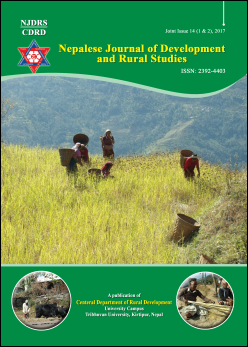Direction and Effectiveness of Trade Policy Reform: A Case Study of Indo-Nepal Trade Development
DOI:
https://doi.org/10.3126/njdrs.v14i1-2.19650Keywords:
Trade, Trade policy shift, Effectiveness, Correlation coefficient, GDPAbstract
This paper intends to assess direction and effectiveness of trade policy of Nepal by studying Trade Development between India and Nepal. It follows the comparative method based on the correlation and the simple logarithmic regression model between two-policy implication period: Import Intensive Trade Policy and State led imports intensive Trade Policy (1985-1994) and Export Intensive Trade Policy under Liberalization Regime (1995-2009). This study is based on the secondary data of trade published by the government agency including Central Bureau of Statistics (CBS), Ministry of Finance (MoF), Trade Promotion Center, World Bank, Asian Development Bank.
Nepalese Journal of Development and Rural Studies
Vol. 14 (Joint issue) (1&2), 2017, Page: 74-79
Downloads
Downloads
Published
How to Cite
Issue
Section
License
© Copyright by Central Department of Rural Development




